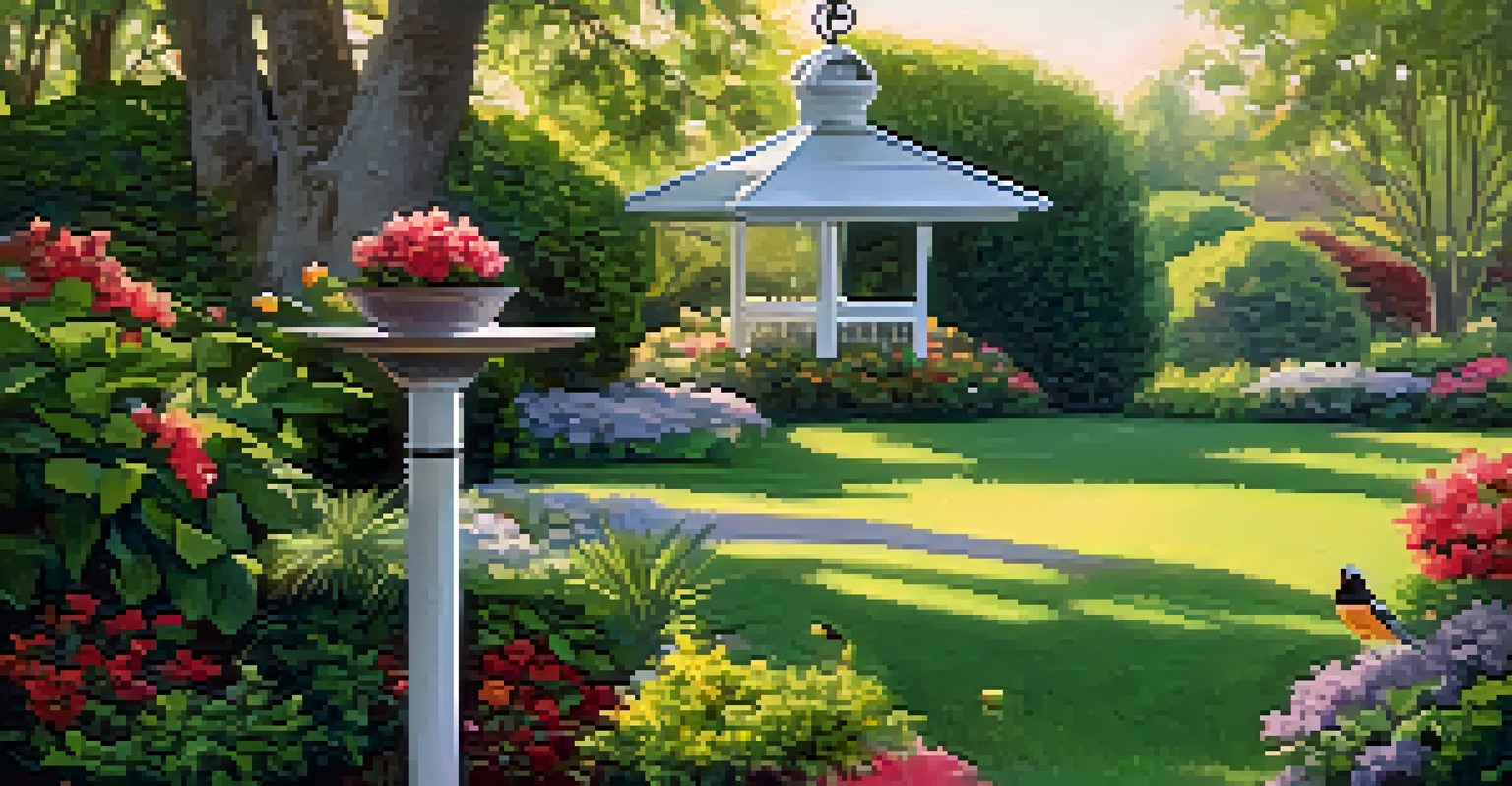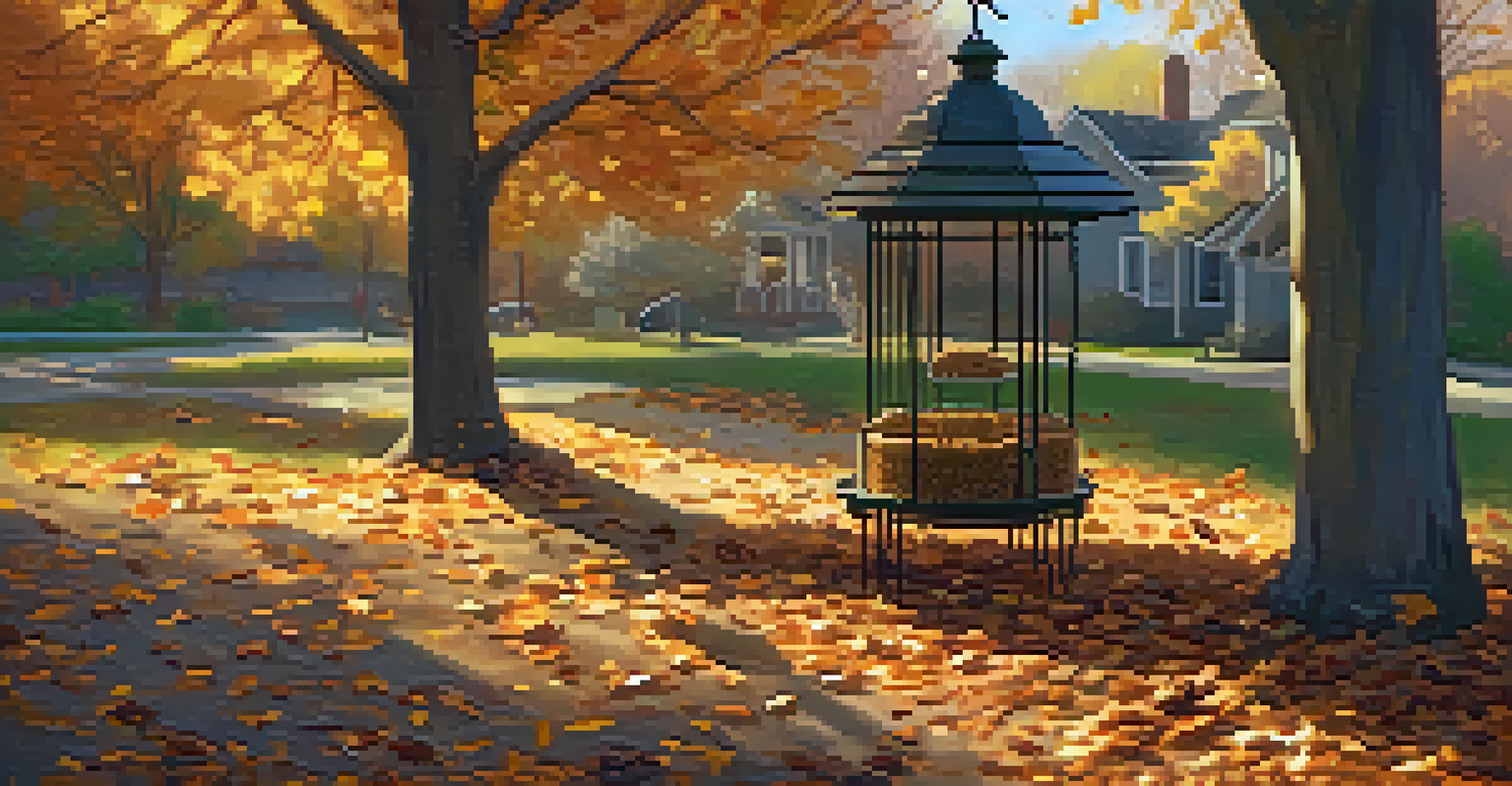Best Practices for Cleaning and Maintaining Bird Feeders

Understanding the Importance of Clean Bird Feeders
Keeping your bird feeders clean is crucial for the health of visiting birds. Just like us, birds can fall ill from contaminated food or dirty surfaces. Regular cleaning helps prevent the spread of diseases, making your feeder a safe haven for these feathered friends.
If you build it, they will come. If you feed them, they will stay.
When feed accumulates, it can attract unwanted pests and mold. Moldy seeds not only deter birds but can also be harmful. By prioritizing cleanliness, you create a welcoming environment that encourages a diverse range of species to visit.
In essence, clean feeders contribute to a thriving bird population in your area. They help maintain the ecosystem by supporting local wildlife. So, let's dive into the best practices that will keep your feeders in top shape!
Choosing the Right Materials for Your Feeders
The materials you choose for your bird feeders can impact their maintenance. For instance, metal and glass are easier to clean than wood, which can absorb moisture and harbor bacteria. Opting for feeders made of durable, non-porous materials can make your cleaning routine a breeze.

Additionally, consider feeders with removable parts. Feeders designed for easy disassembly allow you to access all areas for thorough cleaning. This prevents buildup of old seed or droppings that can lead to health issues for your birds.
Clean Feeders Ensure Bird Health
Regularly cleaning bird feeders prevents disease and creates a safe environment for visiting birds.
Ultimately, selecting the right materials not only simplifies maintenance but also enhances the longevity of your feeder. A well-made feeder can provide years of enjoyment for both you and the birds in your backyard.
How Often Should You Clean Your Bird Feeders?
The frequency of cleaning your bird feeders depends on several factors, including the type of feeder and the local climate. Generally, it's good practice to clean feeders every two weeks, especially during busy feeding seasons like spring and fall. In warmer, humid conditions, you may need to clean them more often to combat mold growth.
The beauty of the natural world lies in the details.
If you notice any remnants of old seed or signs of mold, it's time for a thorough cleaning, regardless of the schedule. Bird feeders that see a lot of traffic may require more frequent attention, as they can accumulate waste quickly.
By keeping a regular cleaning schedule and being mindful of changes in your feeders, you ensure a safe feeding environment. This commitment will reward you with happy, healthy birds visiting your yard.
Step-by-Step Guide to Cleaning Your Feeders
Cleaning your bird feeders might sound daunting, but it can be broken down into simple steps. First, remove all remnants of old seed and any debris. Use a small brush or cloth to scrub away residue from the feeder, focusing on crevices where dirt tends to collect.
Next, prepare a solution of warm water and mild soap or a 10% bleach solution. Soak the feeder in this mixture for about 10-15 minutes, ensuring that all parts are disinfected. Rinse thoroughly with fresh water to eliminate any soap or bleach residue before allowing it to dry completely.
Choose Easy-to-Clean Materials
Opting for non-porous and removable feeders simplifies maintenance and enhances longevity.
Finally, once your feeder is dry, refill it with fresh seed and rehang it in your yard. This thorough cleaning process not only keeps your feeder functioning well but also ensures the health of the birds that visit.
Best Cleaning Solutions for Bird Feeders
When it comes to cleaning solutions, it's important to choose bird-safe products. A simple mixture of warm water and mild dish soap works wonders for most feeders. Avoid using harsh chemicals that can leave harmful residues, as birds are sensitive to toxins.
For a more thorough disinfection, a solution of one part bleach to nine parts water can be effective. Just remember to rinse the feeder well afterward to ensure no bleach remains. This method is particularly useful for plastic feeders, which can harbor bacteria and mold.
Ultimately, your goal is to create a safe and welcoming environment for birds. By using safe cleaning solutions, you not only protect the birds but also contribute to a healthier ecosystem in your backyard.
Seasonal Maintenance Tips for Feeders
Different seasons bring unique challenges for bird feeders. In the fall, it's important to clean out feeders to prepare for winter birds. As temperatures drop, leftover seeds can spoil more quickly, attracting unwanted pests like rodents.
During winter, ensure that feeders are regularly stocked with food as birds rely heavily on these food sources. You may also consider using heated bird baths to provide water in freezing temperatures, further supporting local wildlife.
Seasonal Care Keeps Feeders Functional
Adapting your cleaning and stocking routine to the seasons ensures your feeders effectively support local birds year-round.
As spring arrives, perform a thorough inspection and cleaning of your feeders. This includes checking for any wear and tear from winter weather. Seasonal maintenance ensures your feeders continue to serve their purpose effectively throughout the year.
Encouraging More Birds to Your Feeders
To attract a greater variety of birds to your feeders, consider offering a diverse selection of seeds. Different species have different preferences; sunflower seeds, peanuts, and mixed seeds can entice various birds. Experiment with different types to see which ones your local birds favor.
Additionally, positioning your feeders strategically can make a significant difference. Place them near natural cover, such as shrubs or trees, where birds feel safe from predators. This encourages more birds to visit as they can easily dart into cover if needed.

By combining a wide range of food options with thoughtful placement, you'll create a bird-friendly oasis in your yard. Happy birdwatching awaits as you build a vibrant community of feathered friends!